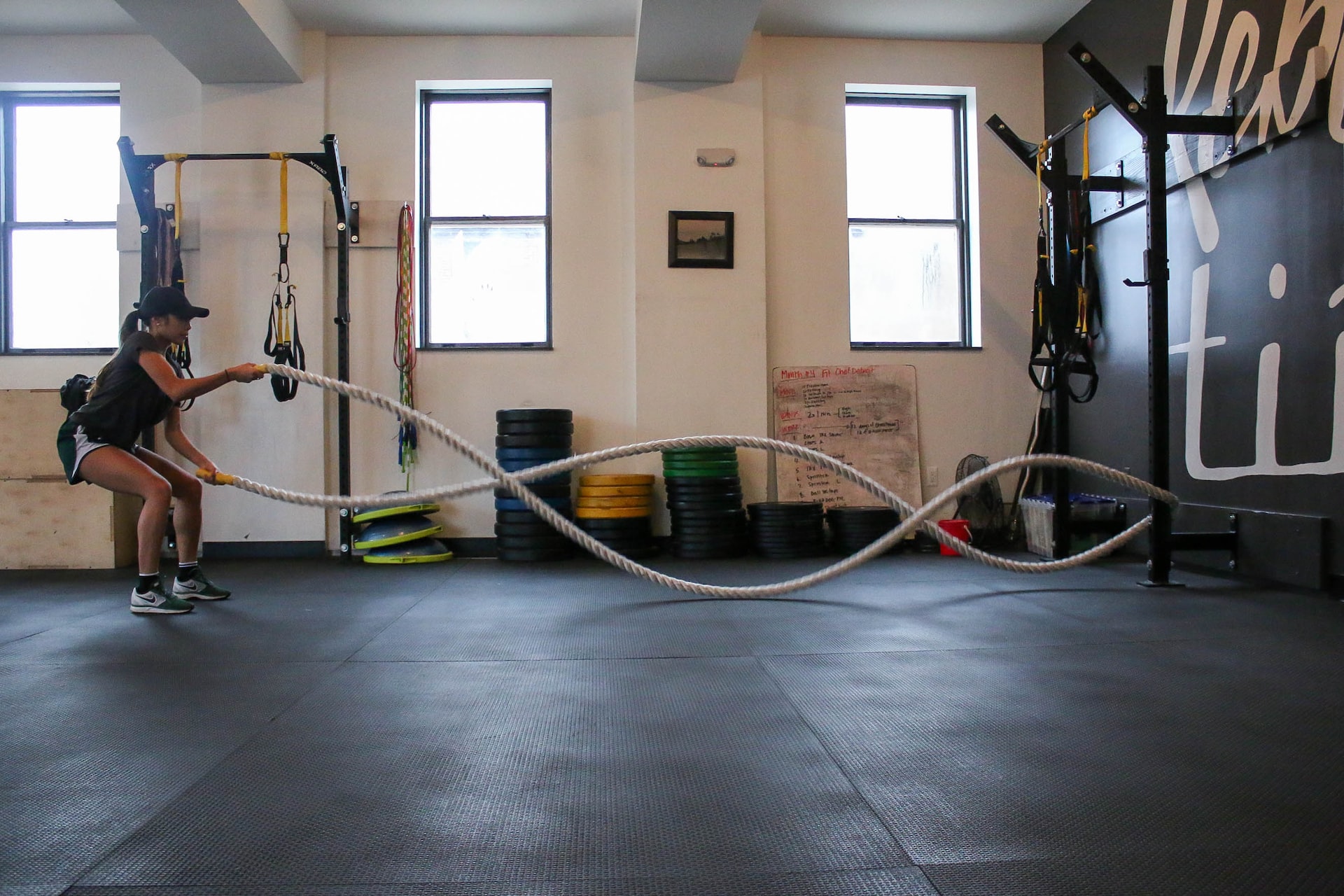What distinguishes the most successful DIY websites from the rest? We here at Jimdo have investigated this with millions of webpages. No matter what your website is about, a few basic guidelines can help you get the most out of your do it yourself website builder.
To get you started, here’s a quick rundown of the greatest DIY website tips:
1. Begin with a basic site plan.
Make a list of the pages you want in your main navigation menu on a piece of paper. List any additional subpages and where they will be placed. This will keep you organized and show you what material you’ll need before you begin building. For additional information on creating a site plan, see this post.
2. Keep your navigation menu to a minimum.
In relation to the site plan, make sure your DIY website’s menu doesn’t contain too many options. A menu bar that spans two lines or has a large number of submenus is confusing and difficult to navigate. A decent rule of thumb is to keep your top navigation menu to no more than 5-7 pages. Your website will appear more streamlined, and your customers will find it easier to find what they require—a win-win situation. Here are five suggestions for creating an effective website navigation menu.
 3. Consider your target audience.
3. Consider your target audience.
You can develop a website that is tailored to the needs of the people you’re trying to reach if you know who you’re trying to reach. It will be easier to construct a focused, successful do it yourself website if you find web designer in surrey is for (and who it is not for). Also, keep in mind that your target audience is unlikely to be “everyone”—that would be an unrealistic goal.
4. Create a unique logo
A logo is a vital part of any DIY website’s branding. It aids in the recognition of your company and can be used on social media profiles, product packaging, and printed materials. Make one with Jimdo’s Logo Creator and place it in the logo area of your website.
5. Use a transparent background for your logo.
When it comes to logos, it’s better to use one with a translucent backdrop (typically a .PNG file). You won’t have a box or shadow appear behind it this way. An explanation of the variations between picture files may be found here.
Get a translucent background version of your logo (bottom) so you may use it in more locations and on more backgrounds.
Create a logo that distinguishes your company.
6. Purchase a domain name for your website.
A free version of most DIY website builders is available. When you upgrade to a paid plan, you’ll get a personalized domain and no advertisements or logos on your site, which both show your visitors that you’re serious about your website (and business). Here’s more information on how to pick the right domain.
7. Give yourself plenty of time to connect your domain.
The process of registering a domain with Jimdo’s website builder is fairly simple. If you’re transferring your domain from another registrar to Jimdo, give yourself plenty of time—the procedure can take anywhere from a few hours to a few days, depending on your registrar.
8. Brush up on some of the most popular online jargon.
Although DIY website builders make the process simple, it’s a good idea to become acquainted with some of the typical website buzzwords (such as CMS, HTTPS, and UX…). You’ll notice that the phrases and acronyms aren’t so obscure once you understand what they mean.
 9. Examine how your website appears on a mobile device.
9. Examine how your website appears on a mobile device.
All website designs on Jimdo are mobile responsive, which means they’ll resize to fit the size of the device you’re using. Even still, using View Mode to preview how your site will look on a mobile phone or tablet is an excellent idea, as is making sure your font is large enough for everyone to read easily.
Examine your website on various mobile devices to ensure that it is easy to read.
10. Make use of some website design shortcuts that you can do yourself.
It’s easy to get caught up in the “do it yourself” portion of the phrase, but there are a plethora of free resources available to assist you with your website design. Did you know, for example, that you don’t have to take your own photos? Or that you can obtain free website icons for just about any sign you can think of? Or do you want to alter your photos without using Photoshop? Continue reading for more DIY website design advice.
11. Use high-resolution photos, even if they’re stock images.
It’s tempting to stretch a low-quality photo into a large backdrop image, but it won’t look well. If your photos appear grainy, distorted, or blurry, they aren’t high enough quality for the size you want to use. Instead, look into some of the free sites available for high-quality, professional images. We also have some helpful hints for optimizing your website’s photos.
12. When designing your website, stick to simple colors.
It’s a good idea to keep your colors simple if you’re a newbie designer. Many of the best DIY websites start with a basic black, white, and/or grey color scheme and then add minor pops of color to create diversity. These colors could be a suggestion from our website builder’s color options menu, or they could match your existing logo or brand colors. This tried-and-true website design style never fails to impress. Here’s where you can learn more about the finest color combinations for DIY websites.
In the Design options, you can change your color palette and even pick a color from a photo you like.
13. Use a font that is simple to read.
Decorative fonts are fascinating to use, but they don’t always transfer well on a computer screen. Make sure you select a clear, web-friendly font that is large enough for all visitors to comfortably read. Grey text should also be avoided because it can appear too faint for individuals to read. On a do-it-yourself website, black writing on a white backdrop is always a nice choice.
14. In your DIY website design, make use of white space.
Rather than overloading a web page with content, it’s much better to give each section some breathing room in the shape of some empty “white” space around it. Websites with a lot of white space are considerably easier to read and navigate, according to designers. The absence of clutter is appealing, and it assists individuals in deciding what to look at.
To avoid a cluttered appearance, leave some “white” space on your page.
15. Break up your text into manageable chunks.
You launch your DIY website, and for the first time, you’re free to write whatever you want for as long as you want. Remember that reading on a screen is difficult for most people, and they’ll most likely skim anyhow. Make short paragraphs out of your material. To make your text easier to process, use columns, headings, bullets, FAQs, and white space (see above). Here are some more suggestions for making your website text appear nice.
 16. Make sure your SEO settings are correct.
16. Make sure your SEO settings are correct.
Many people skip this phase because they believe SEO is too complicated for them, however this is not the case! Don’t be scared to dig into your DIY website’s code and put in your Site Title and keywords. You’d be amazed how many folks forget to fill in these fields. Also, take a look at our SEO Beginner’s Guide. The process of enhancing your search engine ranking becomes lot easier once you understand the fundamental fundamentals.
17. Begin tracking your website traffic, even if it is insignificant.
You should switch your website statistics “on” even if you don’t get a lot of visitors right immediately (which is fine). That way, you can track your success and monitor how your traffic grows over time. You’ll also learn more about your visitors’ origins, allowing you to improve your internet marketing strategy in the future. For even more information, you may link your Jimdo DIY website to a Google Analytics account.
The number of people that click on your calls to action is also displayed in your statistics.
18. Keep in mind that high-quality DIY website traffic takes time to build—be patient!
You might expect immediate traffic after you create your do-it-yourself website. Just keep in mind that increasing the number of visits to your website takes time. To begin, make sure that Google can easily find your site. You may also conduct some basic keyword research and write your website text in a way that is easier for Google to interpret. Don’t be fooled by gimmicks or fast fixes to boost your website traffic; they’re unlikely to pay off in the long run. The most effective strategy to attract the correct website visitors is to ensure that you have good content, optimize it over time, and then monitor the outcomes.
19. Learn more about the legal requirements for your website.
You should educate yourself with the General Data Protection Regulation (GDPR) standards if you have a website situated in the European Union or if you have consumers in the EU. This is a data protection and privacy law that applies to numerous websites, including DIY websites. Though we always recommend speaking with a legal professional, here’s a GDPR primer to get you started. For EU customers, Jimdo also provides a Legal Text Generator that automatically manages your website’s legal pages, such as your Privacy Policy and Imprint.
Make sure your legal pages on your website are up to date.
 20. Don’t be concerned about your “finished” DIY website.
20. Don’t be concerned about your “finished” DIY website.
The truth is that a website is never truly completed. There’s always more data to collect, adjustments to make, and new tests to conduct. If you’re worried about sharing your website with a large audience, consider it a work-in-progress that you may update as needed. After all, the only way to improve it is to go out and see how others use it.
21. Know where to go for help if you get stuck.
Entrepreneurs are naturally do-it-yourselfers, so don’t be discouraged if you require assistance. Our Support Team is available and has experience with all types of websites, and we also have Jimdo Experts on hand to provide you with specialized one-on-one assistance.
22. Look at other successful DIY websites for inspiration.
You’re not the only one who feels this way! See more fantastic do-it-yourself websites that our clients have created on our Jimdo Examples page. Keep notice of what you like since you might be able to replicate it on your own website. We also provide some pointers on how to examine your website’s competitors for free.






